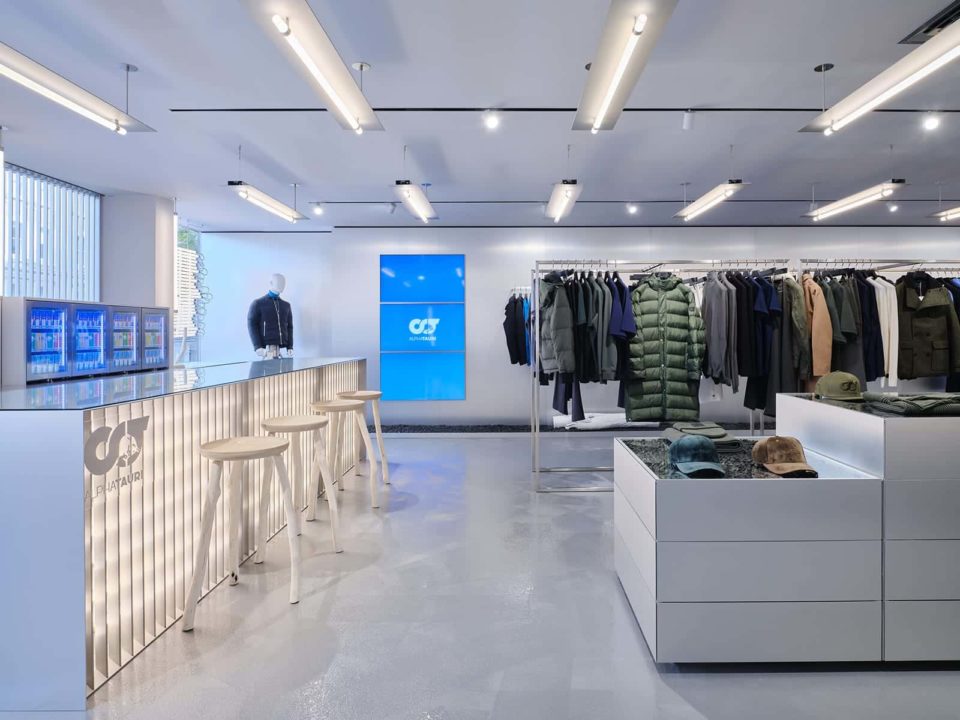The complete guide to voice in retail
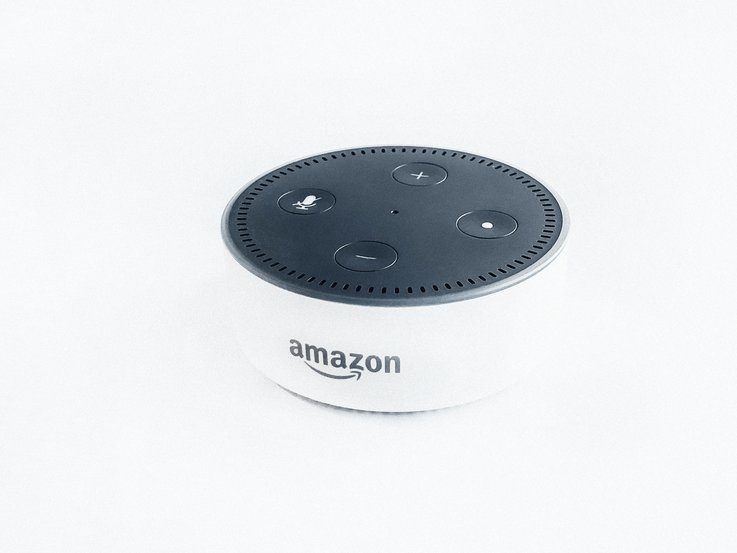
How much do you like the sound of your own voice? If current trends are anything to go by you might have to get used to hearing it a lot more because voice is pegged to be going mainstream. Whether it’s searching for products, getting directions, placing orders or a wealth of other functions, smart speakers and AI-powered virtual assistants mean we’re starting to say commands rather than type them.
New research from Voicebot.ai reports that nearly one in five adults in the US already has access to a smart speaker (although may not necessarily own their own). This reportedly equates to 47.3 million, or 20% of the US adult population.
Considering that Amazon didn’t release its way-paving Echo speaker until November 2014 that’s some fast growth. And it’s not stopping there. Gartner forecasts the market for smart speakers will jump from $700 million in 2016 to $3.5 billion by 2021.
Voicebot.ai also reports that two-thirds of device owners use their speaker daily and over three-quarters at least weekly. Clearly these aren’t just novelty purchases. Users are finding really benefits in being able to speak commands and have them actioned. A lot of this comes down to time and effort. People like things that remove the level of effort required to make something happen.
Remember when you had to get up and walk over to the TV to change the channel? Now we have remotes we spend a lot more time channel-surfing because it requires minimal effort. Playing music used to require picking out a CD or vinyl, turning on your hi-fi and pressing play. Now you can just ask your smart speaker to play something and it’s done.
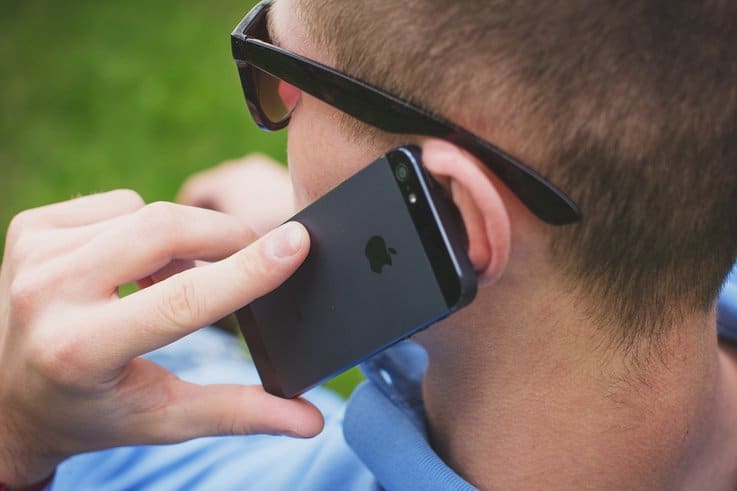
What is voice used for?
A lot. Voice is increasingly becoming a viable option for performing all sorts of actions. You can order goods, find information like the time or weather, set reminders, book services like taxis, control smart home devices, play music, map routes and get directions, check email or the news headlines and more.
The tech continues to improve all the time which not only means it’s able to more accurately understand what you’re asking – an early frustration not least when it came to accents – but also do more.

Image courtesy of Amazon
Who’s leading the way?
We can’t talk about voice without talking about Amazon. Its range of Echo speakers and accompanying Alexa AI are the best-known smart speaker and voice assistant set-up on the market. It has reportedly sold more than 20 million Echo devices to date.
Alexa has a number of built-in capabilities, but owners can expand this by adding skills from Amazon’s expansive Alexa Skills library. This allows them to do new things, using just their voice, or even chain together different skills into ‘routines’. This means they can use a single command to make a number of things happen at the same time.
Before Alexa though the smartphone manufacturers were already experimenting with assistance through voice with Apple’s AI personal assistant Siri being the market leader. It’s worth remembering that right now Alexa is largely confined to the home, whereas our smartphones, and therefore voice assistants, come with us everywhere.
Interestingly though, Voicebot.ai reports that smart speaker owners talk to their devices on average 2.79 times a day, but smartphone users only do so 0.33 times a day. This difference may be down to the fact that we feel more comfortable talking out loud in the privacy of our homes then when out and about with our mobiles. The fact that the predominant way to interact with a smart speaker is to speak to it, whereas there are all sorts of other inputs on smartphones is another major factor.
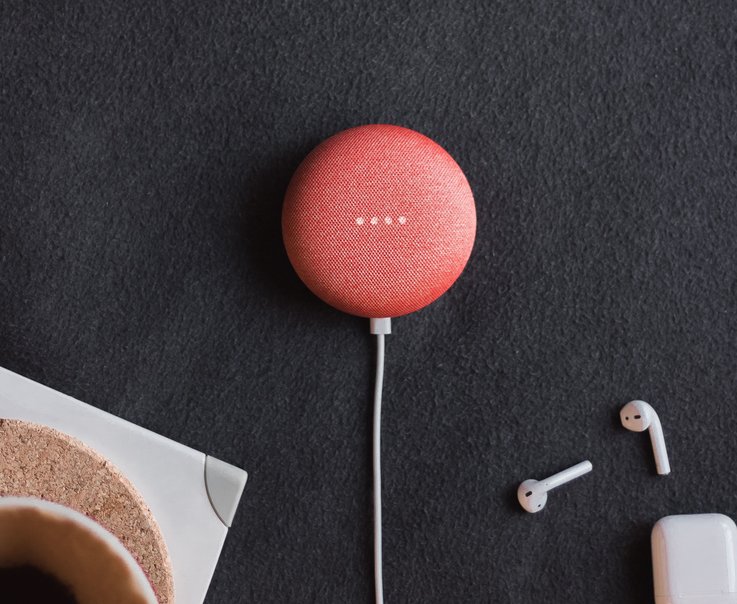
In 2016 Google reported that 20% of mobile searches were conducted via voice, which proves that there is demand from customers for this option. The company launched its own smart speaker, Google Home, in 2017 which is powered by Google Assistant. Google reports that Google Assistant is available on more than 400 million devices including everything from TVs to iPhones to smartwatches.
One benefit Google has is that Android smartphone users will already be semi-familiar with Google Assistant, which might make them more inclined towards the Home speaker. Likewise, it’s easier to imagine how Google Home will link up with your smartphone due to the operating systems consistency.
That said Amazon’s position as the first mover means it is by far the most dominant smart speaker on the market. This has been helped by the quick succession of new Echo products including smaller and cheaper entry-level options and Amazon’s pre-made e-commerce audience to sell them too. The Alexa Skills library also now has more than 25,000 skills in it meaning there’s a one for every need you could ever have. The downside of this though is that there’s a lot to filter through which raises questions about quality, whereas a more curated list might help usage.
Apple is also making moves in the smart speaker sector having just launched its new HomePod. The biggest issue it currently faces is the lack of integration and overall control. As expected it will only work with an iPhone or iPad, and exclusively plays music from Apple Music. In addition, whichever iPhone or iPad you use to set up the HomePod with is then linked to it which means certain actions can only happen when they can ‘see’ each other.
There’s also plenty of other options out there from big names like Samsung and Sonos, as well as a myriad of smaller operators.

How is voice impacting retail?
The most obvious retail application of the smart speaker is customers using Amazon’s Alexa to reorder regular Amazon purchases just by asking for them. At the moment though the number of people using this function is quite low. As we get more used to using voice to make purchases it’s likely to increase.
Another important consideration is trust in the specific retailer you are buying from as unlike an online or in-store purchase you don’t have visibility of what you’re buying when using voice. This is one reason why most orders are for products that the customer has had before as there’s less risk.
Amazon’s dominance of both retail and technology has prompted various other retailers to team up with other companies in order to stay competitive. This includes Walmart which is enabling customers to use voice to shop on its ecommerce site via Google. Plus the company offered a discount on their first order to customer who bought a Google Home product from Walmart.
It’s not the only one teaming up with Google either. Target and Home Depot have agreed similar deals. Target enables customers to shop for thousands of products, but not perishables, via Google’s smart speaker and assistant. Both Walmart and Target say they can offer more personalised shopping by requiring customer to register their account with the companies with Google Express. This means they’ll be able to reorder product and know a customer’s favourite brands, which makes for effort-free voice ordering.
For these retailers partnering with Google is a quick way to achieve greater penetration in voice ordering in a scalable way. It saves them time and money in development by harnessing the technology Google has already built. This is likely to be an ongoing feature of retailer voice ordering launches.
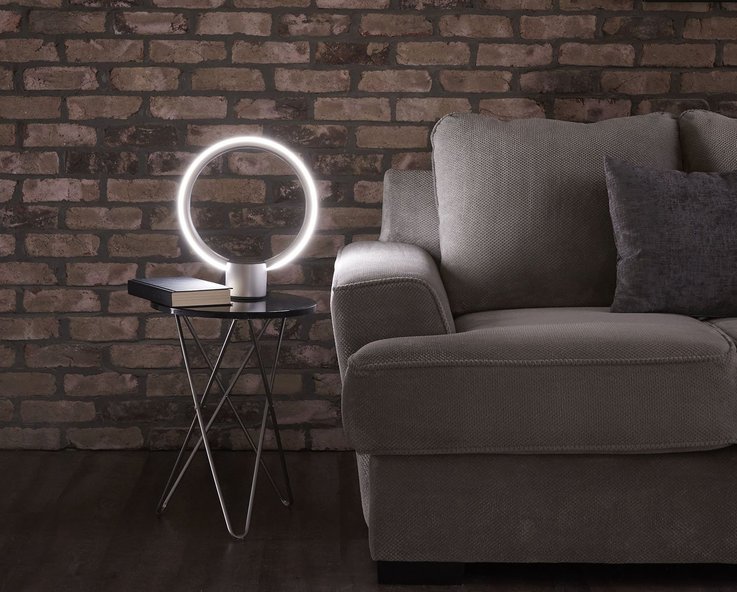
Image credit: GE
There’s also an upwards trend in Alexa-enabled products from other manufacturers. Amazon allows access to Alexa for use in third-party goods which means we’re now seeing a wide variety of voice-powered items. This include an Alexa-enabled lamp from GE where you can tell it to turn on and off, change colour and more, and a in-car gadget from Garmin that lets you use voice to find directions and play music.
Although for Amazon the benefit is in having Alexa in as many places as possible, the ability to use the tech is a real investment saver for retailers and manufacturers. It means they can add voice capabilities to products quickly and on a platform that people recognise. This means it’s likely that we will see more and more voice-enabled products for sale in the years to come.
It’s not just smart speakers where voice is impacting retail though. More people are using voice to search for products and services, which means retailers should be thinking about how they get noticed on this channel. Where do they rank in voice-powered searches? Are they going to be recommended to customers?
It can also add another dimension to their existing customer communication channels. Last year Starbucks added the ability for customers to use voice to place orders in its mobile app. The company says they can also speak to modify their order as if they were speaking to the barista in-store.
At the same time, it launched an Alexa skill that let customers reorder their usual drink. This approach means that customers have the convenience of using Alexa to place orders, which is important if they become used to using this for all their voice activities, but that Starbucks isn’t relying solely on Amazon for its voice capabilities. It makes for a more seamless experience as customers can order through voice on as many Starbucks channels as possible.
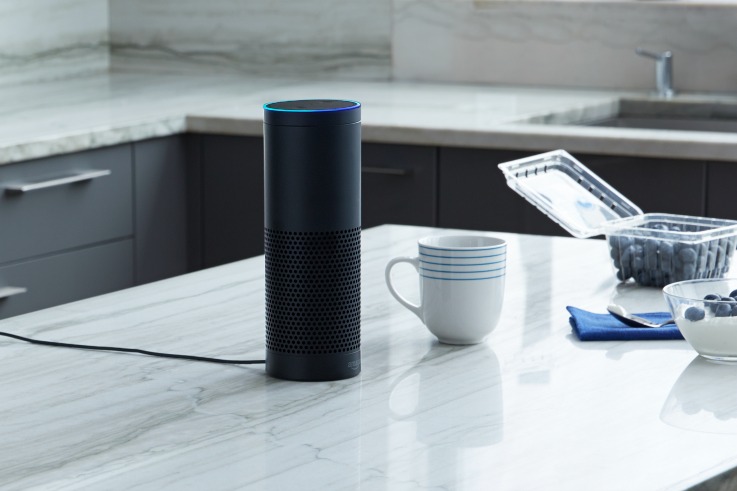
Image courtesy of Amazon
Where does the future lie?
Last year Amazon and Microsoft announced that they had partnered to allow their smart assistants, Alexa and Cortana respectively, to talk to each other. The deal makes sense in terms of Amazon and Microsoft not being clear competitors when it comes to the function of their assistants. More widely, Amazon has its fingers in a lot of pies, but at present Microsoft clearly doesn’t think this is an issue right now.
As a result of the partnership, Windows customers can use voice to buy items through Amazon by asking Cortana to open Alexa, and Echo users can access their Microsoft calendars, email and more by asking Alexa to open Cortana.
It’s a glimpse into a world where smart assistants are increasingly prevalent, but where no one assistant is likely to have penetrated all parts of our lives. Co-operation is going to be needed to stop customers becoming frustrated. If it’s not easier to order by voice, because your smartphone won’t talk to your home speaker and so on, then customers will continue pressing buttons.
There’s also going to be a lot of thinking around how voice can be woven into more shopping channels. The TechCrunch Disrupt 2017 Hackathon featured ‘Alexa Shop Assist’ – an innovative idea of using Alexa-powered hardware to help customers find things in store. It worked on the basis of kitting out a store with Alexa-enabled devices that use a combination of iOS app, Alexa Skill Set and Voice Service, AWS Lambda platforms and more to enable customers to ask where a certain item is and be told which aisle to go to.

What’s more the co-founders also saw an opportunity for Alexa Shop Assist to help customers in their buying choices by letting them ask which variation of a product they should buy. The system then uses database product info to deliver a recommendation.
One of the most interesting bits of the concept though is the ability to track a customer around the store based on their speech pattern. If a customer asks a question Alexa can then recognise if they ask another one later on in their journey and tie those together. Currently Alexa Shop Assist isn’t still being worked on, but the idea shows what voice has the potential to do for physical retail.
Also showing the potential voice has is GE’s LABracadabra project. The company has created a series of videos showing simple at-home science experiments. Users can purchase the ingredients to recreate them themselves, or order a pre-made kit from GE containing everything they need. Where it gets interesting is that there is an accompanying LABracadabra Alexa skill that budding scientists can enable to have the instruction read out loud to them. They can also ask questions and get help if they get stuck.
It’s not difficult to imagine this type of voice capability being expanded to retail. In the future you could order your flatpack furniture from IKEA and then have the instructions read out to you step-by-step by your smart speaker. Or do the same thing with your meal kit subscription. What if you bought a new beauty product and the brand used voice to help suggest different looks you could try?

Voice as a new communication channel
It’s also worth noting that smart speakers and virtual assistants are creating a new communication channel for retailers and customers. It feels like a much more personal and intimate exchange, as opposed to just typing in a search, and therefore there’s a lot of scope for retailers to really personalise the interactions. Particularly if they are able to access and understand the wider customer data that these devices have.
Your smart speaker and AI assistant know what songs you played, that you check the weather every morning, that you always reorder groceries on a Monday, that you have a work conference coming up, you have a fun run in your calendar, that you take a cab on Fridays and much more. If retailers were able to tap into this rich seam of information they could add real context to their interactions.
For example, suggesting a new product to add to your Monday grocery order. Or directing you to buy tickets for an upcoming show by your most-played artist. Perhaps you need a new wardrobe for that wedding next month or if you’re always checking the weather then an advance reminder about new season fashion might be useful.

Here lies the biggest opportunity for retailers but also the biggest challenge. One of the biggest barriers to smart speaker adoption is privacy. Some customers are concerned about devices always ‘being on’, which means they’re listening to their everyday conversations as well and harvesting that information. Recent data scandal news from Facebook is likely to only deepen this privacy conversation.
How customers interact with products may also change as a result of voice. If customers become comfortable with just saying what they want to buy and trusting the AI to order what they want or will like, then how does that impact retail marketing? If people aren’t looking at or interacting with a product before buying how do you win them over? What if the AI deems that another brand’s black t-shirt is a better fit that customer than yours? Is this going to prompt a new type of advertising or see brands paying smart speaker companies to prioritise their products?
Already there are reports that FMCG companies are approaching Amazon about promoting their products via Alexa. At present there’s not really any advertising on smart speakers like the Echo, but as manufacturers push to get their products at the top of voice search results this may well change.
When it comes to voice there’s a lot for retailers to consider. But if you want to keep hearing the sound of success it’s best not to ignore it.
Find out more about voice in retail with our dedicated stats factfile. Want to go straight to the hottest retail technologies, latest disruptive thinking and simplest new ways to lower costs and boost sales? Transform your team’s thinking using Insider Trends’ little black book. Find out how here.



